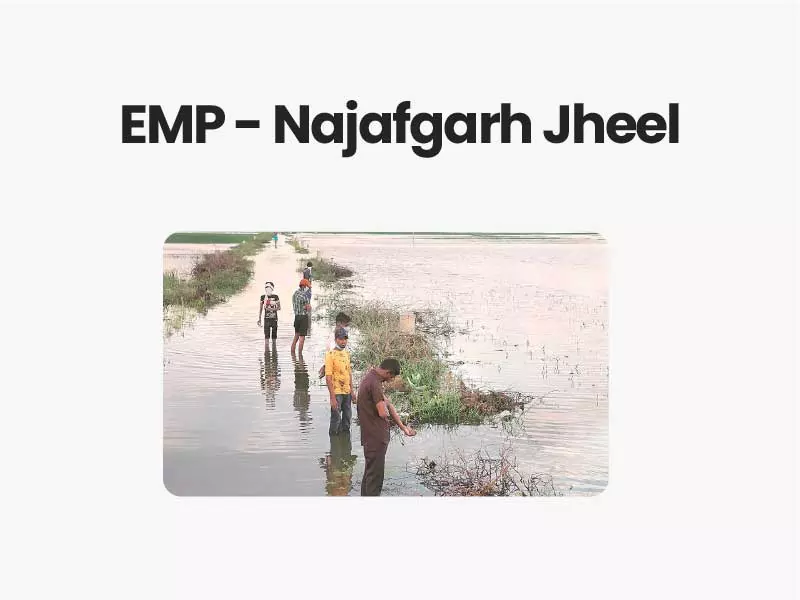Companion@360 → 7 Month programme to sharpen your writing skills → REGISTER NOW

Environment Management Plan for Najafgarh Jheel
The National Green Tribunal (NGT) has directed Delhi and Haryana to enforce the Environment Management Plan (EMP) that the two governments have prepared for the rejuvenation and protection of the Najafgarh Jheel, a transboundary wetland.
The implementation of these action plans is to be monitored by the National Wetland Authority through the respective State Wetland Authorities.
Earlier, the Union Environment Ministry had set up a three-member committee to prepare an integrated EMP.
The top priority would be to notify the Najafgarh jheel and its area of influence under The Wetlands (Conservation and Management) Rules, 2017.
It lists immediate measures to be taken including demarcating the boundary of the wetland using geo-tagged pillars, and commissioning a hydrological assessment and species inventory.
Medium-term measures to be implemented in two to three years include in-situ treatment of major drains meeting the Najafgarh jheel, regular monitoring of the waterbird population, and relocating flow obstructions such as power sub-stations.
It also proposes a detailed estimation of sewage generation in the area considering 15 years of projected population, and identification of all drains contributing to pollution in the jheel.
It is located in a natural depression in southwest Delhi, close to the Gurugram-Rajokri border on National Highway-48.
The lake is largely filled with sewage from Gurugram and surrounding villages of Delhi. A portion of the lake falls in Haryana.
The presence of 281 bird species, including several threatened ones such as Egyptian vulture, Sarus Crane, Steppe Eagle, Greater Spotted Eagle, Imperial Eagle and those migrating along the Central Asian Flyway has been reported at the lake.
Read Also Deepor Beel
Najafgarh Jheel
The Najafgarh Jheel is a critical natural infrastructure for the region, buffering floods, treating wastewater, recharging groundwater (with high potential for water supply to significant population) and providing habitat to numerous plant, animal and bird species.
It can regulate the microclimate by virtue of being a heat and carbon sink. In fact, if the EMPs are properly and fully implemented, the jheel can become central to the National Capital Region’s ability to mitigate the local effects of climate change.

